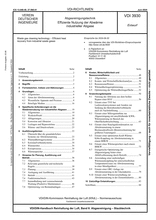Standards Worldwide
Standards Worldwide
Phone +49 30 58885700-07

Draft technical rule
VDI 3930:2024-06 - Draft
Waste gas cleaning technology - Efficient heat recovery from industrial waste gases
- German title
- Abgasreinigungstechnik - Effiziente Nutzung der Abwärme industrieller Abgase
- Publication date
- 2024-06
- Original language
- German
- Pages
- 90
- Publication date
- 2024-06
- Original language
- German
- Pages
- 90
Product information on this site:
Quick delivery via download or delivery service
Buy securely with a credit card or pay upon receipt of invoice
All transactions are encrypted
Short description
In order to achieve the goals of current energy and climate policy, measures to increase energy efficiency in industry are becoming increasingly important. The reduction of the primary energy provided for the useful energy requirements of industry harbours enormous potential. The avoidance and recovery of waste heat from industrial processes is a key option that needs to be utilised. The standard shows specific technical methods and designs for heat transfer with which the waste heat from industrial waste gases can be utilised sensibly and efficiently. The user is not given a detailed explanation of all the design principles and types of heat transfer systems, but is given an overview of the most common systems and their advantages and disadvantages. The standard provides information and assistance in assessing in which cases the utilisation of this energy source is technically feasible and economically justifiable. It also shows the essential boundary conditions to be observed (e. g. choice of material, exhaust gas composition, operating conditions). The relevant technical regulations (e. g. VDI Heat Atlas) must be observed for the specific design and calculation. The standard applies to all exhaust gases from industrial processes (e. g. from incineration plants, plants in the steel, glass, ceramics, cement, food and chemical industries).
Content
ICS
13.040.40,
27.060.30
Also available in
Loading recommended items...
Loading recommended items...
Loading recommended items...
Loading recommended items...
